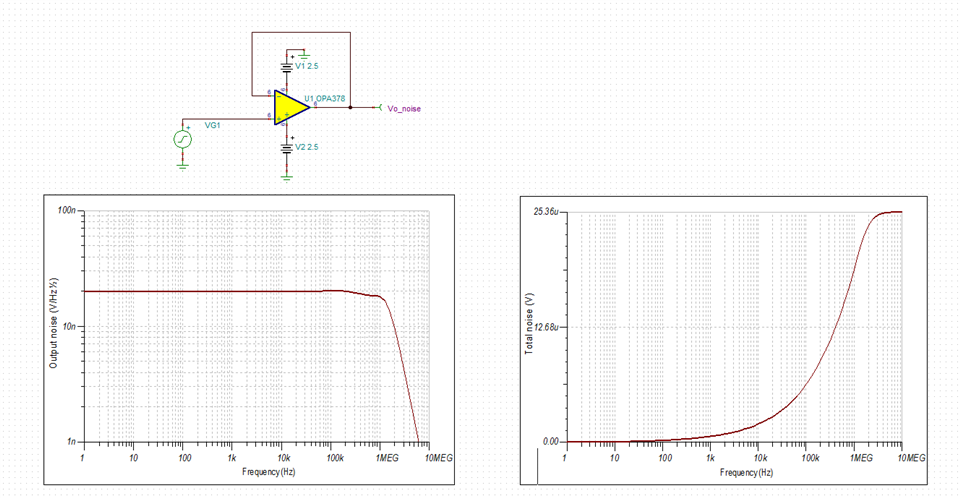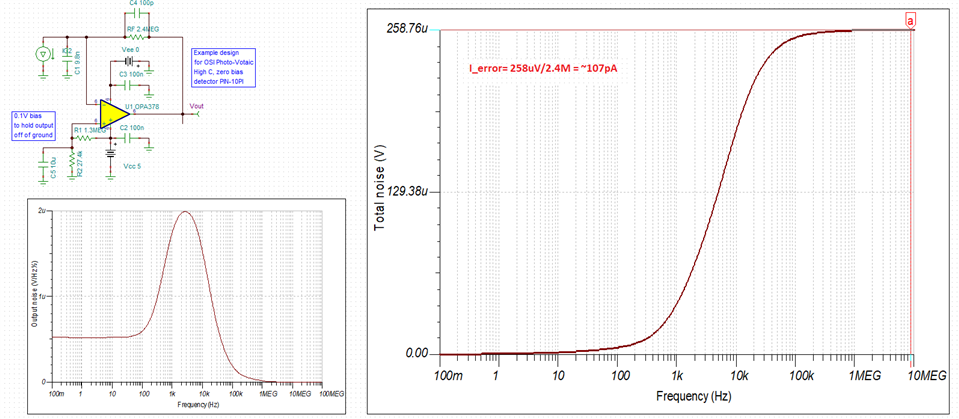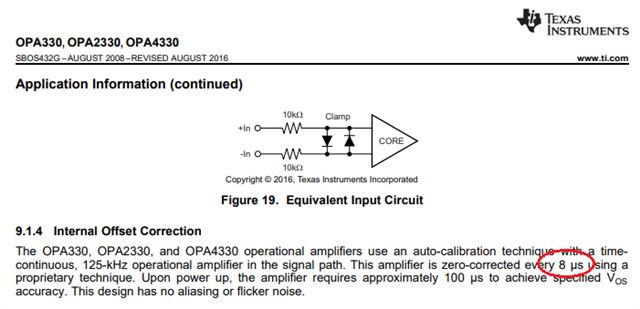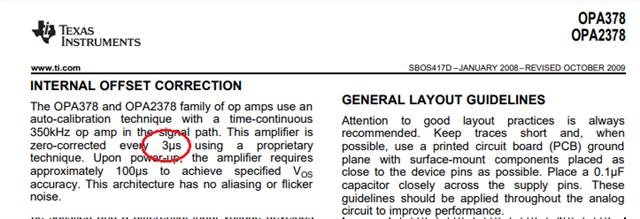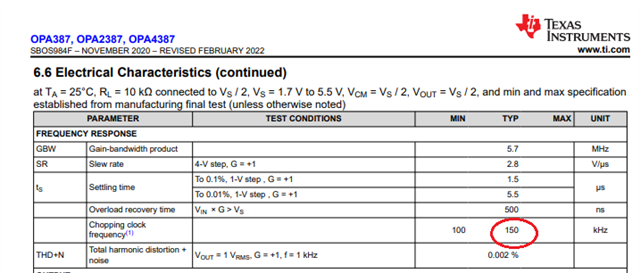Other Parts Discussed in Thread: OPA392, OPA387, OPA333
So this is following up a bit on this earlier OSI photovoltaic design question. I got to thinking about how to really do this when offset voltage is critical -
Of course a chopper might be interesting but
1. If we let the output simply self limit bandwidth wise, are we not going to run into a peaking voltage noise at some point? And - since the NG is very high out there, that might be an integrated noise question - I was thinking a post RC would be prudent, but the OPA378 does not show spot noise above 10kHz, some of the more recent choppers show it out further with the peaking intrinsic to the architecture. Without the peaking info in the spot noise, not sure where to put that post RC.
2. Some of the chopper discussions talk about the effect of the chopper on input bias current? I am assuming that is not in the model, something that should be considered? - and here I am wondering if choppers should be banned from this app even with their great offset and drift?
Here is an example from that OSI design requirement above,
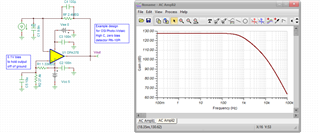
This shows pretty good output spot noise where the 2.4Mohm dominates until the noise gain gets really high, nothing too concerning at higher F - but that chopper noise is probably not in this macromodel.

And the file,


